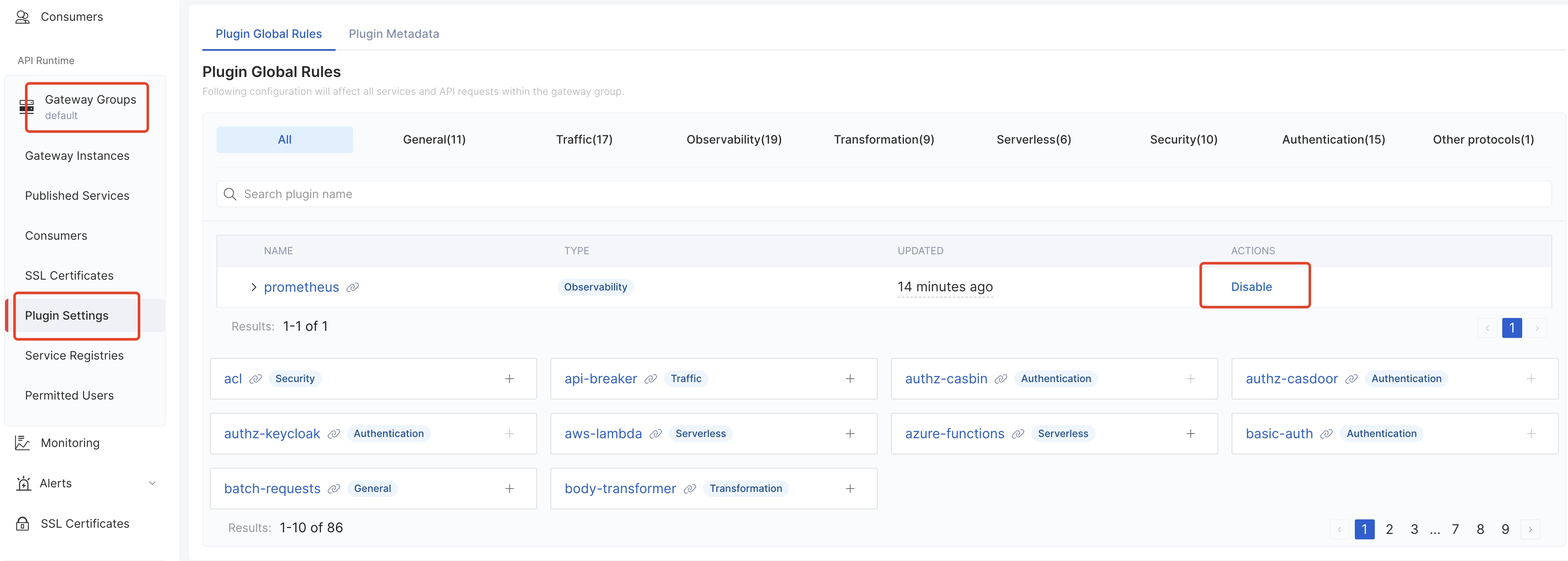- K8s cluster
- Install API7 Gateway (CP and DP) or APISIX
- A test upstream (NGINX Upstream)
- Install ADC (A CLI tool to connect gateway instances and publish configurations)
- Verify cluster is running:
$ kubectl get nodes
NAME STATUS ROLES AGE VERSION
ip-172-31-22-219.ec2.internal Ready <none> 54m v1.29.3-eks-ae9a62a
ip-172-31-24-73.ec2.internal Ready <none> 54m v1.29.3-eks-ae9a62a
ip-172-31-32-45.ec2.internal Ready <none> 61m v1.29.3-eks-ae9a62a
- Label the nodes:
$ kubectl label nodes ip-172-31-22-219.ec2.internal nodeName=upstream
$ kubectl label nodes ip-172-31-24-73.ec2.internal nodeName=wrk2
$ kubectl label nodes ip-172-31-32-45.ec2.internal nodeName=api7ee
node/ip-172-31-22-219.ec2.internal labeled
node/ip-172-31-24-73.ec2.internal labeled
node/ip-172-31-32-45.ec2.internal labeled
- Create a new namespace:
We install all resources in the same namespace "api7".
$ kubectl create namespace api7
namespace/api7 created
- Install APISIX:
$ helm repo add apisix https://charts.apiseven.com
$ helm repo update
$ helm install apisix apisix/apisix --create-namespace --namespace apisix --set nodeSelector."nodeName"=apisix
By default etcd enable persistent storage and you may receive some errors if you do not configure StorageClass for your cluster.
You can also temporarily disable persistent storage with the command below, but be careful not to disable it during a production environment or the data will be lost after the Pod restarts.
$ helm install apisix apisix/apisix --create-namespace --namespace apisix --set nodeSelector."nodeName"=apisix --set etcd.persistence.enabled=false
- Check deployment status:
$ kubectl get svc -owide -l app.kubernetes.io/name=apisix -n apisix
apisix-admin ClusterIP 10.100.132.48 <none> 9180/TCP 110s app.kubernetes.io/instance=apisix,app.kubernetes.io/name=apisix
apisix-gateway NodePort 10.100.119.191 <none> 80:30180/TCP 110s app.kubernetes.io/instance=apisix,app.kubernetes.io/name=apisix
- Forward the Admin API port and gateway port:
$ kubectl -n apisix port-forward svc/apisix-admin 9180:9180
$ kubectl -n apisix port-forward svc/apisix-gateway 9080:80
- Install API7 Control Plane:
$ helm repo add api7 https://charts.api7.ai
$ helm repo add apisix https://charts.apiseven.com
$ helm repo update
# Specify the Node for the api7ee installation (the label we set for the Node earlier).
$ helm install api7ee3 api7/api7ee3 --set nodeSelector."nodeName"=api7ee --set postgresql.primary.nodeSelector."nodeName"=api7ee --set prometheus.server.nodeSelector."nodeName"=api7ee -n api7
By default PostgreSQL and Prometheus enable persistent storage and you may receive some errors if you do not configure StorageClass for your cluster.
You can also temporarily disable persistent storage with the command below, but be careful not to disable it in a production environment or the data will be lost after the Pod restarts.
$ helm install api7ee3 api7/api7ee3 --set nodeSelector."nodeName"=api7ee --set postgresql.primary.nodeSelector."nodeName"=api7ee --set prometheus.server.nodeSelector."nodeName"=api7ee --set postgresql.primary.persistence.enabled=false --set prometheus.server.persistence.enabled=false -n api7
- Check deployment status:
$ kubectl get svc -owide -l app.kubernetes.io/name=api7ee3 -n api7
NAME TYPE CLUSTER-IP EXTERNAL-IP PORT(S) AGE SELECTOR
api7ee3-dashboard ClusterIP 10.100.89.120 <none> 7080/TCP,7443/TCP 2m3s app.kubernetes.io/component=dashboard,app.kubernetes.io/instance=api7ee3,app.kubernetes.io/name=api7ee3
api7ee3-dp-manager ClusterIP 10.100.3.182 <none> 7900/TCP,7943/TCP 2m3s app.kubernetes.io/component=dp-manager,app.kubernetes.io/instance=api7ee3,app.kubernetes.io/name=api7ee3
- Forward the dashboard port to the local machine, log in to the console and upload the licence:
$ kubectl -n api7 port-forward svc/api7ee3-dashboard 7443:7443
- Log in to the dashboard and configure the "Control Plane Address" in the Gateway Settings:
https://api7ee3-dp-manager:7943
- Disable global plugin
prometheus:
- Add Gateway Instance:
Select the Kubernetes method and configure the "namespace" to generate an install script and run it. This step will get a token to connect the CP to the DP. For example:
$ helm repo add api7 https://charts.api7.ai
$ helm repo update
$ cat > /tmp/tls.crt <<EOF
-----BEGIN CERTIFICATE-----
MIIBiDCCATqgAwIBAgICBAAwBQYDK2VwMEQxCzAJBgNVBAYTAlVTMRMwEQYDVQQI
EwpDYWxpZm9ybmlhMQ0wCwYDVQQKEwRBUEk3MREwDwYDVQQDEwhBUEk3IEluYzAe
Fw0yNDA4MDkwNjM0NDRaFw0yNTA5MDgwNjM0NDRaMDAxDTALBgNVBAoTBEFQSTcx
HzAdBgNVBAMTFmFwaTdlZTMtYXBpc2l4LWdhdGV3YXkwKjAFBgMrZXADIQA4EF9i
qogMWwWQnhrD478bCTQxxeDrT8zUUC+KC4lbLaNkMGIwDgYDVR0PAQH/BAQDAgeA
MBMGA1UdJQQMMAoGCCsGAQUFBwMCMC0GA1UdDgQmBCQzMmE2MTU3Yi0yMGFmLTQ4
NDctYWEyOC04M2M1M2ZmMTY4ZDAwDAYDVR0jBAUwA4ABMDAFBgMrZXADQQDzxx2i
QV62ZB0WOdxofuQ2J+35sh6tYCOayrjAn5KISQ5L1JMIrDZKotq5G8JLM3qMs9Nc
DZjDWzx+W1j94GAO
-----END CERTIFICATE-----
EOF
$ cat > /tmp/tls.key <<EOF
-----BEGIN PRIVATE KEY-----
MC4CAQAwBQYDK2VwBCIEILY+bFM98L+OLxTWd73hnl9FmYGfhGASUhuYrpt/Q0CE
-----END PRIVATE KEY-----
EOF
$ cat > /tmp/ca.crt <<EOF
-----BEGIN CERTIFICATE-----
MIIBdjCCASigAwIBAgIRAJDZ9s+rZMNiqiiAyT3NXpkwBQYDK2VwMEQxCzAJBgNV
BAYTAlVTMRMwEQYDVQQIEwpDYWxpZm9ybmlhMQ0wCwYDVQQKEwRBUEk3MREwDwYD
VQQDEwhBUEk3IEluYzAeFw0yNDA4MDkwNjI4MDBaFw0zNDA4MDcwNjI4MDBaMEQx
CzAJBgNVBAYTAlVTMRMwEQYDVQQIEwpDYWxpZm9ybmlhMQ0wCwYDVQQKEwRBUEk3
MREwDwYDVQQDEwhBUEk3IEluYzAqMAUGAytlcAMhAN/VCNB2ChcL4BrXVImIW/EH
YZi2oDrXVub/mXaMSr7Zoy8wLTAOBgNVHQ8BAf8EBAMCAoQwDwYDVR0TAQH/BAUw
AwEB/zAKBgNVHQ4EAwQBMDAFBgMrZXADQQCA0M1McTsw6c9LGqmFP1g/BXNyeyDI
dBnVnPlZgCwMQCDqkI9S8wyZbz4jLGGccKnqAclNhuJsSn94UGuteaIG
-----END CERTIFICATE-----
EOF
$ kubectl create secret generic -n api7 api7-ee-3-gateway-tls --from-file=tls.crt=/tmp/tls.crt --from-file=tls.key=/tmp/tls.key --from-file=ca.crt=/tmp/ca.crt
$ helm upgrade --install -n api7 --create-namespace api7-ee-3-gateway api7/gateway \
--set "etcd.auth.tls.enabled=true" \
--set "etcd.auth.tls.existingSecret=api7-ee-3-gateway-tls" \
--set "etcd.auth.tls.certFilename=tls.crt" \
--set "etcd.auth.tls.certKeyFilename=tls.key" \
--set "etcd.auth.tls.verify=true" \
--set "gateway.tls.existingCASecret=api7-ee-3-gateway-tls" \
--set "gateway.tls.certCAFilename=ca.crt" \
--set "apisix.extraEnvVars[0].name=API7_GATEWAY_GROUP_SHORT_ID" \
--set "apisix.extraEnvVars[0].value=default" \
--set "etcd.host[0]=https://api7ee3-dp-manager:7943" \
--set "apisix.replicaCount=1" \
--set "apisix.image.repository=api7/api7-ee-3-gateway" \
--set "apisix.image.tag=3.2.14.3"
Note: We should install the Gateway on a separate Node and set up the worker_process as needed. You can set it with a flag:
- config gateway worker_process:
--set "nginx.workerProcesses"=1 - config node selector:
--set apisix.nodeSelector.nodeName=api7ee - run as root user:
--set apisix.securityContext.runAsNonRoot=false--set apisix.securityContext.runAsUser=0
kubectl apply -f k8s-resources/upstream-nginx.yaml
kubectl apply -f k8s-resources/wrk2.yaml
Use APISIX or API7 Enterprise v3.2.13.0
- https://run.api7.ai/adc/release/adc_0.11.0_linux_amd64.tar.gz
- https://run.api7.ai/adc/release/adc_0.11.0_linux_arm64.tar.gz
- https://run.api7.ai/adc/release/adc_0.11.0_darwin_arm64.tar.gz
Use API7 Enterprise v3.2.11.3
- https://run.api7.ai/adc/release/adc_0.9.0_linux_amd64.tar.gz
- https://run.api7.ai/adc/release/adc_0.9.0_linux_arm64.tar.gz
- https://run.api7.ai/adc/release/adc_0.9.0_darwin_arm64.tar.gz
- Generate API Token
ADC needs an API Token to access Admin APIs. You can generate an API Token from the Dashboard:
- Login -> Organization -> Tokens -> Generate New Token
- Configure ADC Credentials
Create a .env file in the same directory as the ADC binary.
# API7 Enterprise Example
ADC_BACKEND=api7ee
ADC_SERVER=https://127.0.0.1:7443
ADC_TOKEN=a7ee-6baF8488i8wJ5aj7mEo3BT705573eC8GH905qGrdn889zUWcR37df66a34e9954b61918c5dfd13abce3e
ADC_GATEWAY_GROUP=default
# APISIX Example
ADC_ENABLE_APISIX_FORCE=1
ADC_BACKEND=apisix
ADC_SERVER=http://127.0.0.1:9180
ADC_TOKEN=edd1c9f034335f136f87ad84b625c8f1
- Verify ADC Status
$ ./adc ping
Connected to the backend successfully!
We have provided adc configurations for each of the 9 scenarios, which you can use directly:
- One route without plugins
- One route with limit-count plugin
- One route with key-auth and limit-count plugin
- One route and one consumer with key-auth plugin
- 100 routes without plugins
- 100 routes with limit-count plugin
- 100 routes and 100 consumers with key-auth and limit-count plugin
- 100 routes and 100 consumers with key-auth plugin
- One route with mocking plugin
$ ./adc ping
Connected to backend successfully!
$ ./adc sync -f adc_conf/<filename>.yaml


